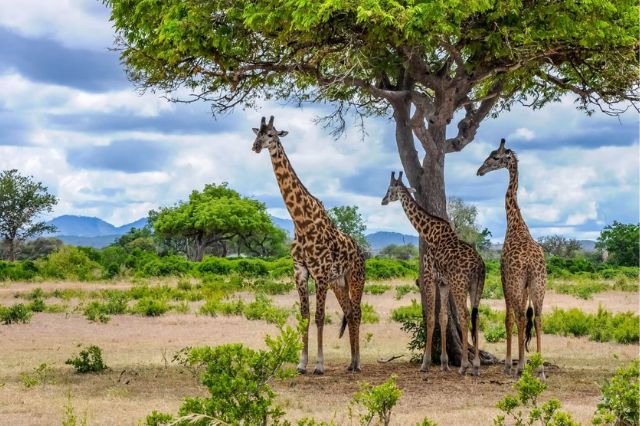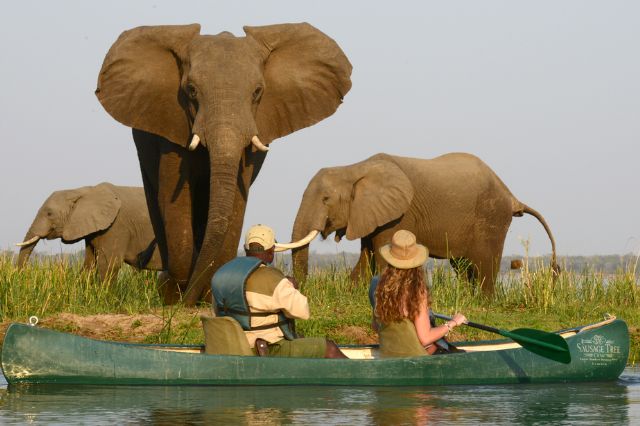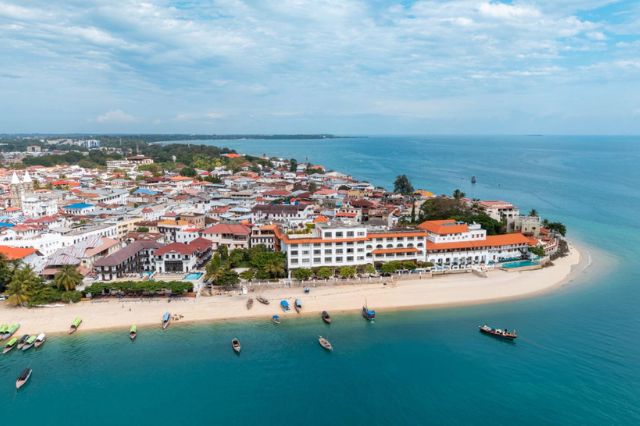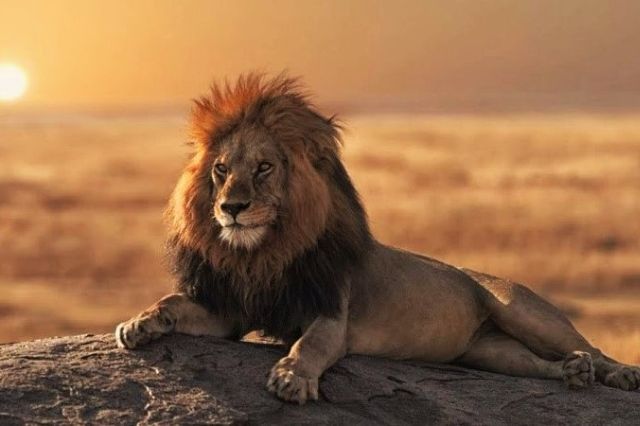Serengeti National Park
What to Expect at Serengeti National Park
Visitors can enjoy unique activities like hot air balloon safaris for breathtaking aerial views of the wildlife and guided walking safaris for an up-close encounter with nature. Cultural experiences with nearby Maasai communities provide insight into local traditions and ways of life. Whether you visit during the dry season for incredible game viewing or the wet season for lush landscapes and abundant birdlife, Serengeti promises an unforgettable and immersive adventure.
Serengeti National Park is a year-round destination, but the best time to visit depends on what you want to experience:
Dry Season (June to October): This is the peak time for wildlife viewing. The vegetation thins out, and animals gather around water sources like the Serengeti River, making them easier to spot. During this time, the Great Migration is at its most dramatic, with wildebeest and zebras crossing the plains in large numbers. The dry season also offers clear skies and mild temperatures, making it perfect for game drives and witnessing predator-prey interactions.
Wet Season (November to May): The wet season transforms the Serengeti into a lush, green landscape. While the rains can make some areas muddy and wildlife sightings a bit more challenging, this period is ideal for birdwatching as migratory species arrive. The calving season occurs between January and February, offering the chance to witness newborn animals and the predators that follow. The wet season also brings fewer tourists, making it a more peaceful and scenic experience, ideal for photography.
Serengeti National Park stands out as a premier safari destination due to its unparalleled combination of wildlife, landscapes, and experiences. The park is renowned for the Great Migration, where millions of wildebeest and zebras traverse the plains, followed by predators like lions, cheetahs, and leopards. The Serengeti River, along with other water sources, attracts a wide range of animals, especially during the dry season, offering incredible game viewing opportunities. The park’s vast, open plains and iconic acacia trees create a stunning backdrop for unforgettable wildlife encounters.
Beyond its exceptional wildlife, Serengeti provides a more intimate safari experience in certain areas, with some regions offering fewer crowds, allowing for a peaceful and immersive adventure. Unique activities like hot air balloon safaris and walking safaris provide diverse ways to experience the park’s beauty and wildlife. Cultural interactions with nearby Maasai communities further enrich the visit, offering insights into their traditional way of life and enhancing the overall safari experience.
Game Drives: Game drives are the quintessential safari experience in Serengeti. You can choose between half-day or full-day excursions. During the dry season, animals congregate around water sources, making it easier to spot large herds of elephants, buffalo, and predators like lions and cheetahs. Some popular areas for game drives include the Seronera Valley, known for its rich wildlife and diverse habitats.
Hot Air Balloon Safaris: A hot air balloon safari offers a unique perspective of the Serengeti’s vast plains and wildlife. Floating silently over the landscape at sunrise provides stunning views of the migrating herds below. After landing, enjoy a bush breakfast complete with champagne, surrounded by the natural beauty of the park.
Walking Safaris: Walking safaris allow you to connect with the wilderness in a more intimate way. Guided by experienced rangers, you’ll learn about tracking animals, identifying plants, and understanding the ecosystem. This immersive experience lets you appreciate the smaller details of nature that often go unnoticed during game drives.
Experience the Great Migration: If your timing is right, witnessing the Great Migration is a once-in-a-lifetime experience. From late June to early September, millions of wildebeest and zebras cross the plains, facing predators and challenging river crossings. This natural spectacle draws visitors from around the world.
Photography : The Serengeti offers breathtaking landscapes and incredible wildlife, making it a dream destination for photographers. Capture stunning sunrises and sunsets over the plains, close-ups of animals, and the dramatic moments of the Great Migration.
Cultural Visits: Visiting local Maasai communities can enhance your understanding of the region’s culture. Participate in traditional dances, learn about their customs, and explore their homes. This interaction provides valuable insights into the lives of the Maasai people and their harmonious relationship with the land.
Singita Sasakwa Lodge
Kati Kati Tented Camp
Bush Rover Camps
Embalakai Tented Camp
Ready to Begin Your Tanzanian Adventure?
Exclusive Serengeti National Park Adventure Itinerary Request
Popular questions about Serengeti National Park
Are guided tours available in Serengeti National Park?
Yes, guided tours are widely available in Serengeti National Park. Visitors can choose from a variety of options, including private game drives with experienced guides, group tours, and even specialized photography tours. Many lodges and tour operators offer packages that include guided safari experiences, ensuring you have knowledgeable assistance in spotting wildlife and understanding the ecosystem.
What should I pack for a trip to Serengeti National Park?
When packing for a trip to Serengeti National Park, consider lightweight, breathable clothing in neutral colors to blend into the environment. Bring binoculars for wildlife viewing, a good camera for photography, sunscreen, a wide-brimmed hat, and insect repellent. Don’t forget comfortable walking shoes for any walking safaris. If you’re visiting during the wet season, pack waterproof clothing and gear as well.
Is it safe to travel to Serengeti National Park?
Yes, traveling to Serengeti National Park is generally safe. The park is well-managed and attracts visitors from around the world. However, it’s important to follow safety guidelines, such as staying inside your vehicle during game drives, not approaching wildlife, and adhering to the instructions of your guide. It’s also advisable to check travel advisories and ensure you have appropriate travel insurance before your trip.






